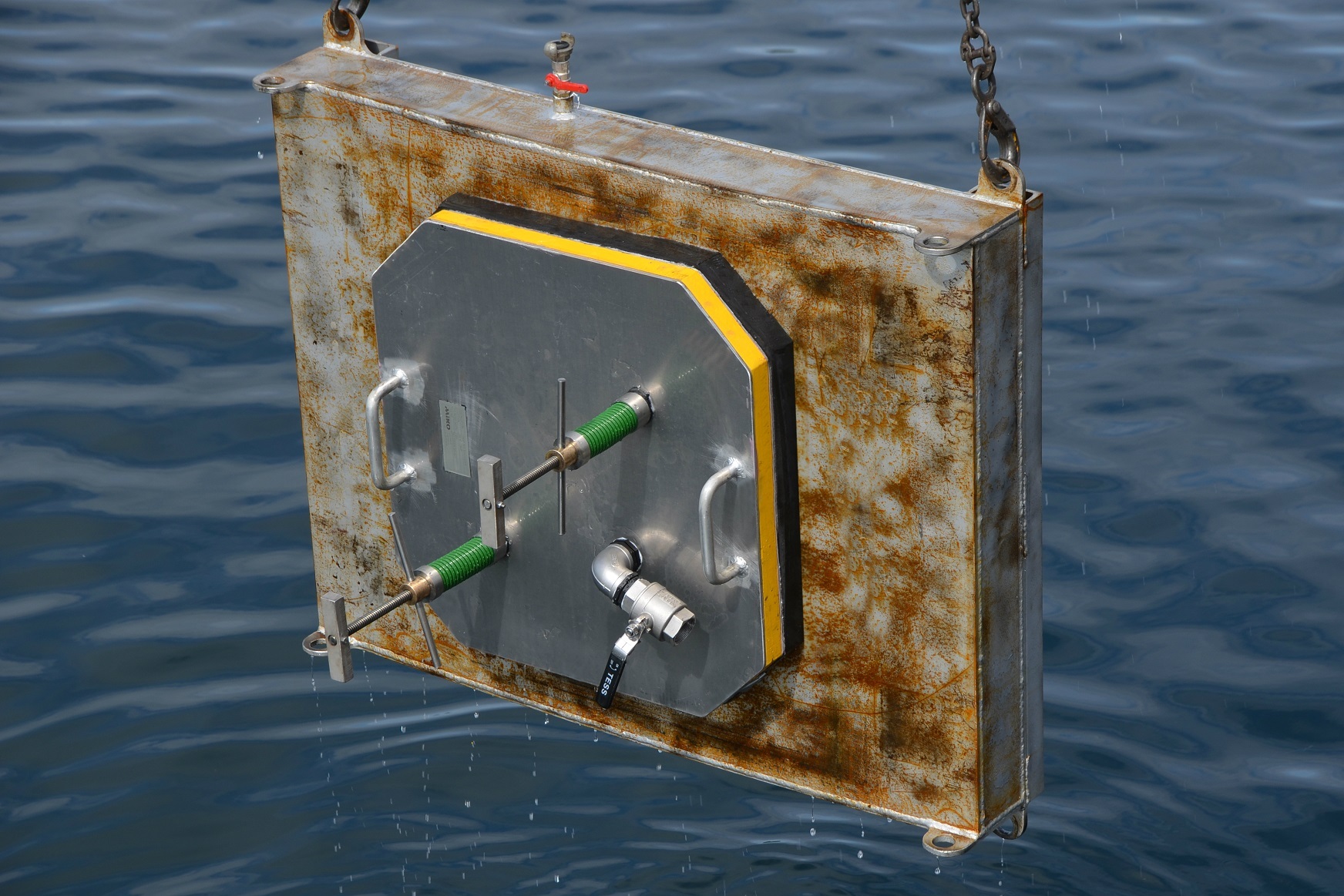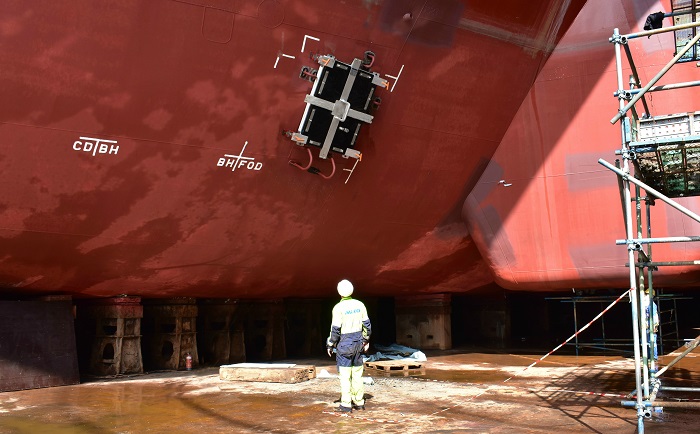Miko Marine has delivered four unique magnetic sea chest blanks for use by Teekay during conversion work on the Randgrid FSO (Floating Storage and Offloading) vessel. The vessel is currently undergoing fitting-out at the Sembawang dockyard in Singapore and the Miko closures are now on site and ready to be used to create safe conditions for technicians working inside the vessel’s sea chests. Because magnets attach to the hull instantly they are being presented as a valuable means of saving time and costs when compared with other methods used during typical underwater engineering work.
The Randgrid is currently undergoing a major conversion into a FSO (Floating Storage and Offloading) vessel with work that includes the installation of an internal turret mooring system. When the conversion is complete the new FSO will be operated by Teekay on Statoil’s Gina Krog field in the North Sea.
The Miko hull closures are new to the ship repair industry and are a development of designs previously supplied to and proven by Odfjell Drilling which used them on the Deepsea Stavanger semi-submersible platform. Because the closures are each held in place against the vessel by powerful permanent magnets, valuable time savings are achieved when compared with the methods traditionally employed for closing sea chests. 3D laser scanning was used to enable the precision manufacture of the Miko blanks and to ensure that they have a perfect fit against the curved profile of the hull. The scanning and precision measurement was carried out by Miko in the Sembawang dry dock last year and manufacture was completed in time for their delivery in January.
The Randgrid project is a new demonstration of Miko expertise in its specialised applications of magnetic technology. This application is unique due to its use of four or eight powerful Miko MAM permanent magnets, depending on the size of the closure. With each magnet being capable of holding up to 450 kg it is possible to achieve an immediate watertight seal for the closures without the need for any other fastening devices being fitted to the steel hull. Flotation material is integrated within the blanking plates and this makes them neutrally buoyant and easily handled under water by ROV. Each magnet used is attached to its closure by a special rubber link which introduces an element of flexibility so the plate can be positioned precisely and fitted flush against the hull before it is tightened into place. When the repair work is finished each magnet is simply freed by having its release lever lifted by a diver or ROV so the blank can be quickly retrieved by crane.



